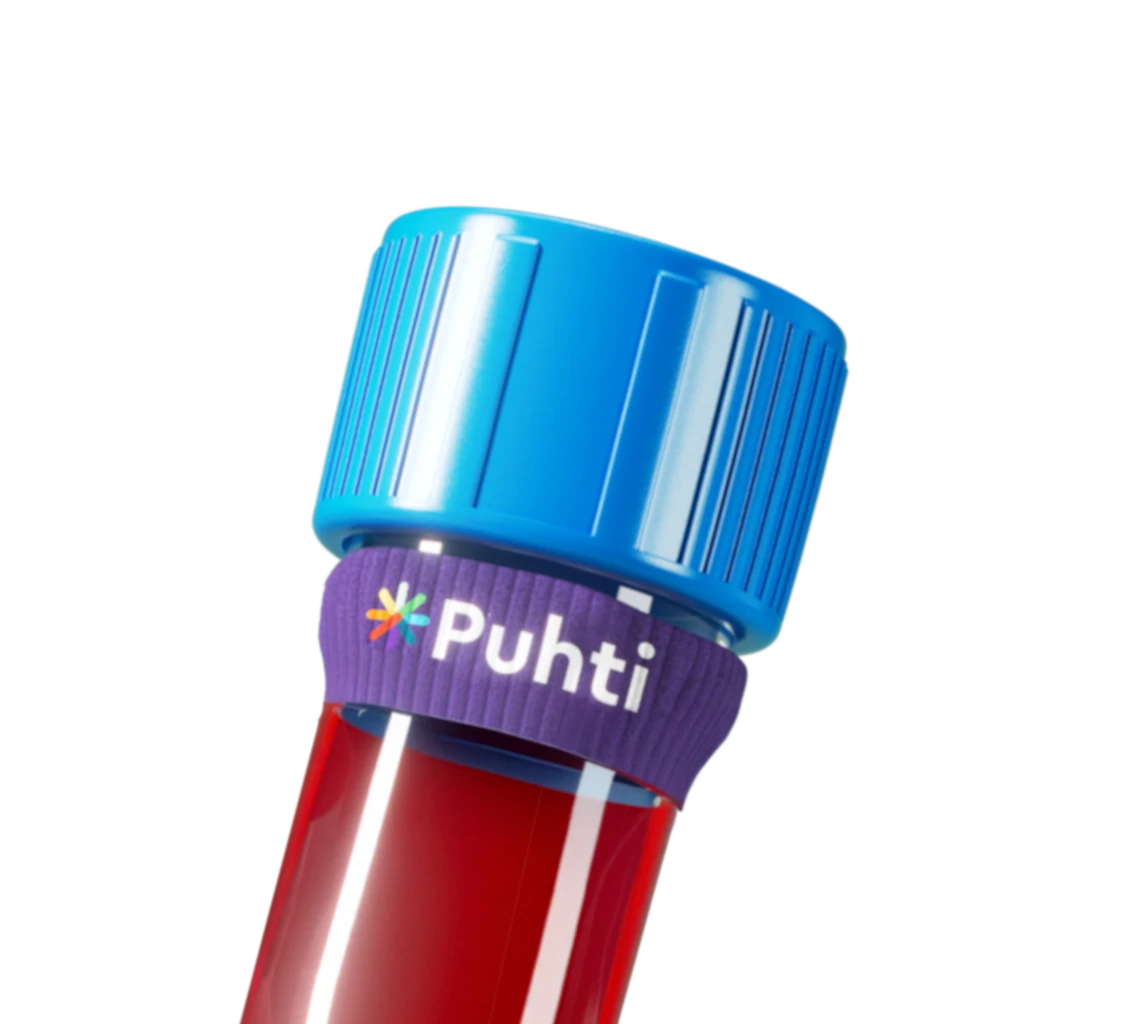
Vitamin D – Recommendations, sources, reference values, and vitamin D deficiency
Vitamin D is stored in the body during summer, but its concentration decreases during the dark winter months.

Vitamin D – Recommendations, sources, reference values, and vitamin D deficiency
Vitamin D is stored in the body during summer, but its concentration decreases during the dark winter months.
Vitamin D:
- Precursor of active vitamin D is formed in the skin.
- D2 vitamin is obtained solely from diet.
- It is highly individual whether the generally recommended dosage of 10 µg/day is sufficient to maintain an adequate level of vitamin D.
- If the vitamin D value is under 50 nmol/L, it indicates deficiency. Vitamin D deficiency increases the risk of bone fractures and osteoporosis.
- Recommended level for patients with osteoporosis is 75–120 nmol/L.
Vitamin D
Vitamin D is an essential fat-soluble vitamin for vital human functions that must be obtained sufficiently.
In Finland, vitamin D is stored in the body during summer, but its concentration decreases during the dark winter months, and the stores accumulated during the summer are not alone enough to maintain a sufficient concentration.
Benefits of vitamin D: What is vitamin D needed for?
Vitamin D has a comprehensive effect on our health:
- Vitamin D affects calcium absorption and bone health.
- Vitamin D is needed for immune defence.
- Vitamin D is needed for the prevention of osteoporosis.
- Vitamin D supports the health of the nervous system and the brain.
- Vitamin D may also play a role in many other functions of the body.
Absorption of vitamin D
The intake and absorption of vitamin D is individual. You can measure the level of vitamin D through a blood test. Compare the results you obtained in the laboratory test with the reference values and adjust the dosage of vitamin D supplement if necessary.
How can I get vitamin D?
Vitamin D is obtained from food, the sun and dietary supplements.
On average, Finns do not get enough vitamin D because of our dark winter months. The precursor of active vitamin D is formed in the skin, then converted into its storage form in the liver. Next, it is further converted into active vitamin D in the kidneys. Our vitamin stores may not be fully restored even during the summer as we tend to use clothing to protect our skin from the harmful effects of the sun.
It may be difficult to get enough vitamin D through food. Vitamin D is naturally found in fish and mushrooms. In Finland, vitamin D3 is added to liquid dairy products, plant-based drinks (such as soy and oat drinks), and dietary fats.
In Finland, vitamin D supplementation is recommended during the darker months (and throughout the year for persons under 18 years of age and over 75 years of age). Taking vitamin D supplements throughout the year may be necessary for other age groups as well.
Which foods contain vitamin D?
In addition to the sun, vitamin D is obtained from a few foods, such as fatty fish. Examples of other foods rich in vitamin D are:
- egg yolks
- cod liver oil
- margarine
- yoghurt
- some cheeses
Sources of vitamin D for vegans
Mushrooms are an example of great vitamin D sources for vegans. Try funnel chanterelles, chanterelles, false morels, boletuses, russulas and milk-caps. However, a vitamin D supplement is usually needed as well.
Reference values and recommended level for vitamin D
If the vitamin D value is under 50 nmol/L, it indicates deficiency. Vitamin D deficiency increases the risk of bone fractures and osteoporosis. Recommended level for patients with osteoporosis is 75–120 nmol/L.
The symbol nmol/L stands for nanomole per litre.
Reference levels may vary depending on the laboratory and the test analysis method. Puhti samples are taken and analysed at the laboratories of Mehiläinen.
Recommended intake of vitamin D
| Age group | Total need | Vitamin supplement need |
| 2 w – 2 years | 10 µg/d | 10 µg/d throughout the year |
| 2 – 17 years | 10 µg/d | 7,5 µg/d throughout the year |
| 18 – 60 years | 10 µg/d | 10 µg/d if necessary |
| 61 – 74 years | 10 µg/d | 10 µg/d if necessary |
| over 75-years | 20 µg/d | 20 µg/d throughout the year |
What causes vitamin D deficiency?
Vitamin D deficiency occurs when we do not get enough vitamin D from food or sunlight. Deficiency may also be associated with a malfunction of an organ involved in the storage of the vitamin, such as the liver or kidneys.
Particular attention should be paid to the vitamin D intake of the following groups:
- Small children and pregnant mothers
- Persons who cannot stay in the sun
- Persons over 65 years of age
- Persons who are overweight
- Dark-skinned people in northern conditions. Dark skin has evolved to resist the influence of the sun in the equatorial region, but the influence of the sun is much weaker in the north.
- People with a nutrient malabsorption disorder.
- People who have had gastric bypass surgery
- People who are lactose intolerant
- Vegetarians and vegans
Rickets caused by severe vitamin D deficiency is almost never found in children in Finland. In developing countries, rickets can still occur.
Is it possible to get too much vitamin D (vitamin D overdose)?
Usually, it is impossible to have too much vitamin D through the sun or diet. Taking vitamin D as a dietary supplement can sometimes lead to toxicity. However, this applies only to excessive and long-term use.
When vitamin D supplementation is used as recommended, there is no risk of toxicity. 100 micrograms is the upper limit of a safe daily dose for adults.
How can I get my vitamin D tested?
You can order the vitamin D as a single test from Puhti’s online store. Add the desired products to the shopping cart and complete all the tests at once.
No sampling fee for orders over EUR 40! A sampling fee of EUR 10 will be added to smaller orders.
Vitamin D is included in the following test packages:
- Puhti laboratory package
- Extensive Puhti laboratory package women
- Extensive Puhti laboratory package men
First, order the tests you need via Puhti. You do not need a doctor’s referral. You can visit one of our many laboratories in Finland. Most of the laboratories also serve customers without an appointment. You will receive an easy-to-read results report.







